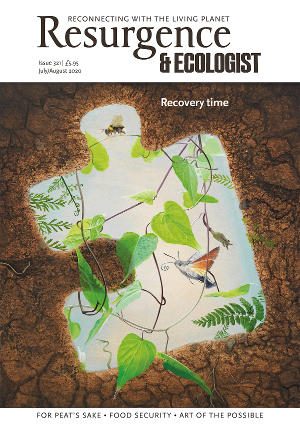Humans seek light – it means life, safety, wellbeing and energy. In the winter months, I sit in front of my light box each morning, countering dull days with 10,000 lux, hoping for motivation and clarity. We have made an electric world buzzing with light; our streets are illuminated around the clock; we gaze into light-emitting screens almost constantly and find brightness at the flick of a switch.
While we pull towards light, hard-wired to do so for our survival, we can feel permanently ‘on’ and ‘wired’ as a result. In his book Under the Stars: A Journey into Light, Matt Gaw explores the alternative. Gaw is a light rebel, searching instead for something that is now very rare and precious. The book takes us on nocturnal adventures as Gaw seeks real, pure darkness. It’s a quest that takes him to the scary dark of the Wood of Cree in Scotland, to the spooky moors of Dartmoor and to the remote Isle of Coll. He also ventures around his hometown in Suffolk, involving an amusing encounter with a policeman, and even to London, to discover the reality of night times in an electric city.
It was Gaw’s trip to the Wood of Cree that moved me. His first real taste of proper dark is captured by this description: “I feel my way through the kissing gate and begin to walk, the dark rushing in after just a couple of tentative steps. Viscous. Thick. Tangible. I repeatedly rub my eyes with the backs of my hands. It is a subconscious act, as if I might clear my eyes, wipe the dark away.” On this pitch-black night, Gaw, reprimanding himself for being foolhardy, becomes lost, and the darkness opens up emotions long suppressed: “I cry for the first time I can remember.”
We use the distraction and clamour of light to hide from ourselves. Gaw neatly shows the link between getting lost in Nature and the natural light that reveals itself when there is no light pollution. He learns about the night sky, learning to read the constellations and see the Milky Way at its best, as well as experiencing meteor showers and finding out about the aurora borealis and the midnight-sun phenomenon.
Gaw’s writing is always poised and beautiful, switching lightly between the concise, persuasive and dramatic and the elegiac, descriptive and lyrical. I read his debut, The Pull of the River: A Journey into the Wild and Watery Heart of Britain, which introduced me to his style of immersive Nature writing, full of images and, best of all, flashes of humour that cut through the seriousness of the scenarios he can find himself in. In Under the Stars, I can’t help but smile at many of the descriptions, such as “Greylags as big as dogs. They graze on the machair, bark at every unexpected footstep and leave turds like giant green Wotsits curled on almost every track and path.”
This book is worth reading for the prose and stories alone, but Gaw also wants us to reflect on this artificial brightness we are implicated in. As he says, “By chasing away darkness and hiding the cues given by natural light we have created another imbalance in the natural world that impacts on plants, pollinators, mammals, birds and, eventually, us.”
This book is an ode to seeking dark, to losing your way but finding yourself, to shunning fake light but finding natural light, and above all it makes you look up for celestial wonder at our beautiful and often ignored night sky.







